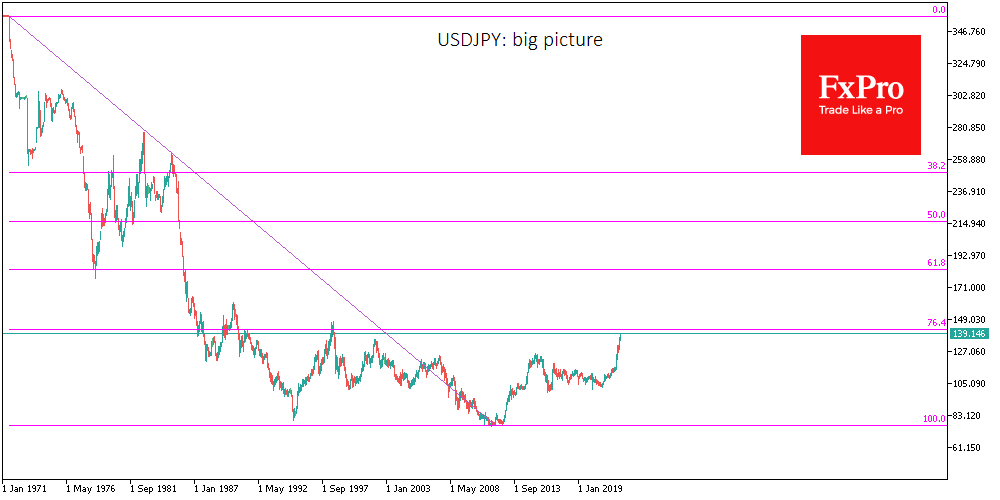Yen is entering the turbulence territory
July 14, 2022 @ 12:08 +03:00
Yesterday’s US inflation data spurred market expectations that the Fed will raise rates by 100 points at the end of July, although about a month ago, Powell called a 75-point increase abnormal.
The revision in expectations for monetary policy of the US central bank again highlighted the contrast with Japanese monetary policy and triggered a new momentum of yen weakness.
The USDJPY is already up to 139.20 at the time of writing, the highest since September 1998. But even then, almost 24 years ago, it was a turbulence zone, where the pair spent less than three months, making a quick reversal in the backdrop of a flaring financial crisis in Russia. Even earlier, in 1990, the USDJPY spent about half a year above 140, but then the dip below was a recovery of the long-term downward trend.
Either way, the 140 area in USDJPY looks like a potential area of turbulence where more volatility is expected. In previous weeks we have heard more verbal interventions from the Bank of Japan and the Ministry of Finance, as well as their joint statement (a rare event).
The new lows in the yen this week and its more than 1.4% fall since the start of the day on Thursday make it necessary to keep events around the Japanese currency on the periphery of attention so as not to miss a possible spike in volatility in one direction or the other.

The yen’s weakening is a legitimate market trend linked to interest rate differential dynamics. But the speculation that the BoJ will not change policy by moving to higher interest rates and that the Ministry of Finance will not be burning through foreign currency for interventions is now embedded in the quotations.
It is to be expected that the market will push the yen down until the Japanese authorities resort to real action rather than words. And the scale of the latter has to be sufficient. It might be an active intervention on the forex market, abandonment of Quantitative and Qualitative Easing, a combination of both, or a public refusal to defend the exchange rate.
Either way, the coming weeks and possibly months will bring increased volatility in the yen, which market participants should be prepared for.
The FxPro Analyst Team







